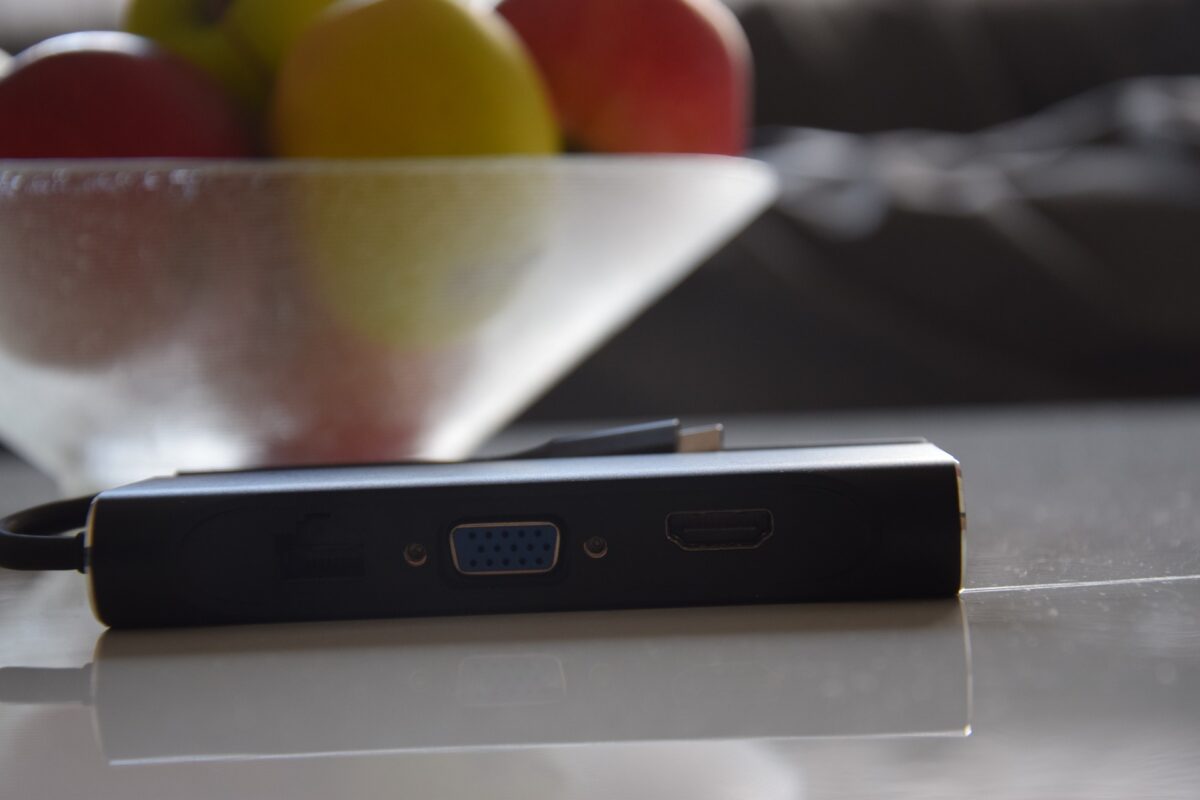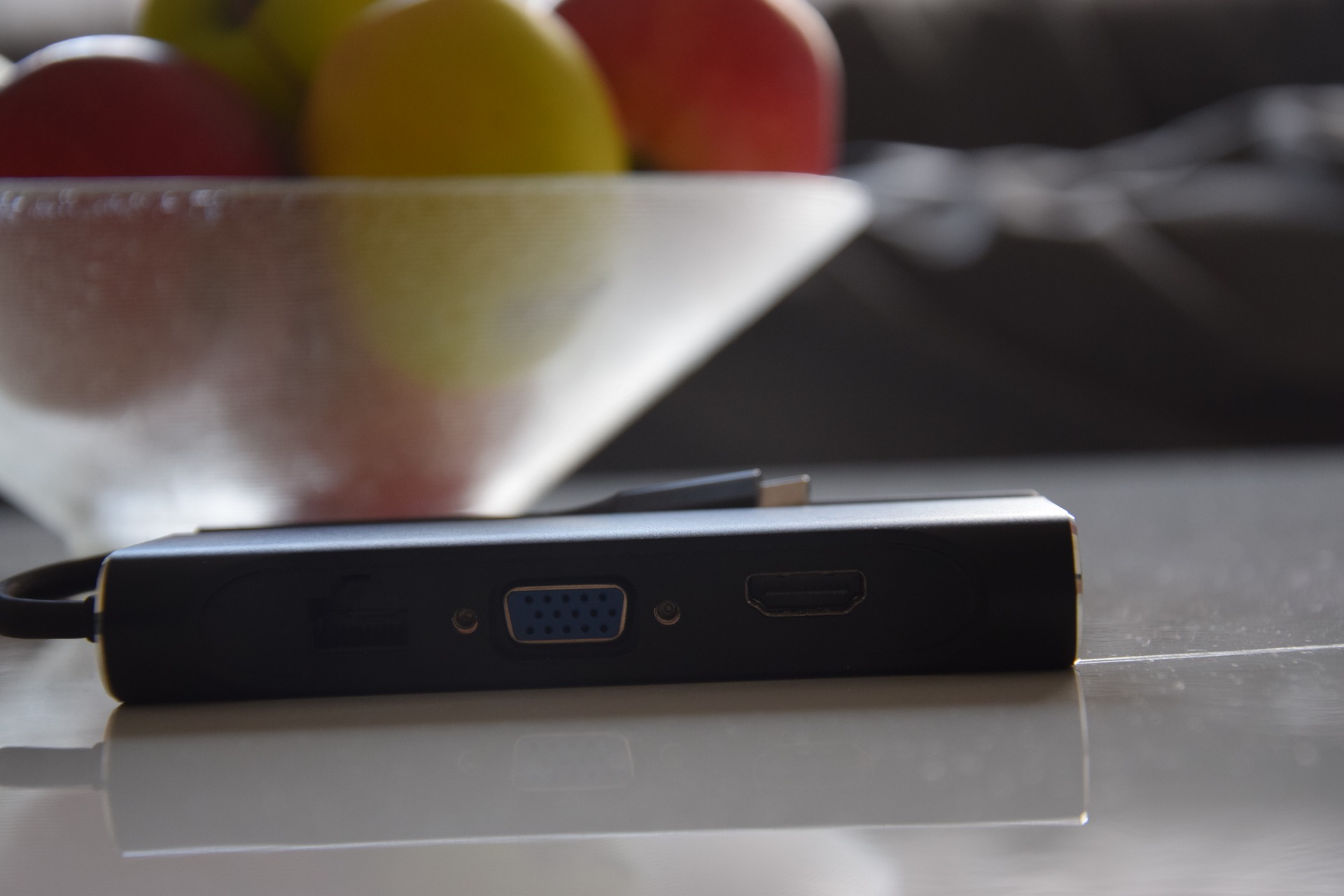

During 2020, the world has undergone some major changes. We’ve all adopted a strangely altered outlook on personal space and out of necessity, learned that we didn’t really need to commute to the office for all those years.
By June 2020, about 43% of employees in the USA were working from home and many of us still are.
That means, we’ve had to rethink the way we interact with colleagues and come up with ways to upgrade our paltry home workstations to business standards.
If you’re one of those people with at least five things to attach to your laptop or desktop and a limited number of ports to do it from, you’ve probably discovered the joys of a docking station by now.
If not, keep reading.
Why Do You Need a Docking Station?
Whether you’re working on your own laptop or one provided by your employer, you’ve probably got a dedicated HDMI port and two USB Type-A connectors, and a place to plug in your power adaptor.
If you don’t want to spend your waking hours hunched over your laptop’s keyboard squinting downwards at the screen, you’re probably going to want to add an external screen and keyboard to your office setup.
That means you’ll need two ports for those appendages, plus one for your mouse, leaving you with nowhere to plug in an ethernet adaptor. If you’ve got one of the newer super-streamlined laptops a la Apple, you’ve probably got even fewer ports to play with.
To get around this, you can use a Bluetooth keyboard and mouse, or you could invest in a USB hub or laptop docking station.
What is a Docking Station?
A USB hub works like an electrical extension cord with many plug points. It simply gives you more space to plug things into your computer.
A docking station has a lot more to offer. Docking stations operate like an extension of your computer and have the following capabilities:
- Provide a variety of video output types e.g. DVI, VGA, HDMI, or DisplayPort as well as extra USB ports
- Support hard-wired, fast network connections
- Can charge or power multiple devices including your laptop
- Have one-plug convenience
- Take care of necessary conversions without the need for multiple adaptors
Instead of acting like a simple extension of one of your laptop’s USB ports, docking station drivers control all the peripherals attached to them.
They’re either powered by the laptop or have their own power supply.
By far the best part about docking stations is that they neaten up your desk and keep the jumble of cords associated with all these devices out of your way.
For best results, set up your desk and all the peripherals how you want them, attach the docking station and neaten up the cords. Then plug the docking station into your laptop.
When you want to use your laptop as a stand-alone device, you simply detach the docking station, and off you go.
Using a Docking Station With Your Laptop
You can use a docking station with a desktop PC, although most people use them with notepads or laptops.
The procedure for attaching a docking station varies slightly according to the type of device you’ve got. Simply scroll down to the part that applies to you.
A Newer Model Laptop with USB-C Ports or Thunderbolt 3 Ports
To set up the docking station, connect one end of the docking station’s cable to your laptop’s USB-C port or Thunderbolt port and the other side to the docking station.
Make sure you connect this cable to the docking station’s input and not one of its USB-C ports. The input should have a label stating ‘dock-in’ or ‘host’.
Make sure this USB-C cable is long enough for your needs, they’re usually pretty short due to the bandwidth demands of USB-C and Thunderbolt 3 docking stations. If it’s inadequate, you can buy a longer one separately.
A Laptop With No USB-C ports or an Older Docking Station
If you’re working with equipment that’s a little older, you will probably need a few adaptors to get everything working.
If you have a Thunderbolt 2 docking station and your laptop has Thunderbolt 3 ports, you can buy a Thunderbolt 3 to Thunderbolt 2 converter.
A docking station with no USB-C port is a little trickier. There’s nothing you can do about this.
Although the two will work together, older USB ports don’t support video, so they use software to function in this capacity. Unfortunately, this slows your computer down when you use this type of port with a docking station.
Attaching a Docking Station to a Desktop PC
Most people are probably thinking, ‘does anybody use a desktop PC anymore?’. If you enjoy playing computer games in your spare time, you know the answer to that.
Computer towers are well suited to gaming since they’re infinitely expandable. If you’re using a gaming computer to work from home, you’ve discovered that it’s easily able to handle even the most demanding aspects of your day job.
You might even have a docking station for attaching extra HD screens in place already. If not, your tower’s probably got more than enough ports to cope with a few extra peripherals anyway.
Due to this, you could get away with using a USB port or an SD card converter for your additional needs.
If you want to use a docking station with your tower, you’ll attach it in much the same way as you would for a laptop.
Choosing the Best Docking Station for Your Workstation
Initially, third-party providers designed docking stations to suit various computers. Nowadays, many computer manufacturers have added docking stations to their production lines.
If you can it’s best to get a dell docking station, HP docking station, or MacBook Pro docking station according to the brand of laptop you’re using.
Embracing the New Normal
Since it looks like we’ll all be working from home for some time to come, investing in a docking station’s a good option for most people nowadays.
After all, working from home may soon become another part of the new normal, so you might as well make yourself comfortable.
Keep browsing our blog for more information on lifestyle-related topics for modern times.
